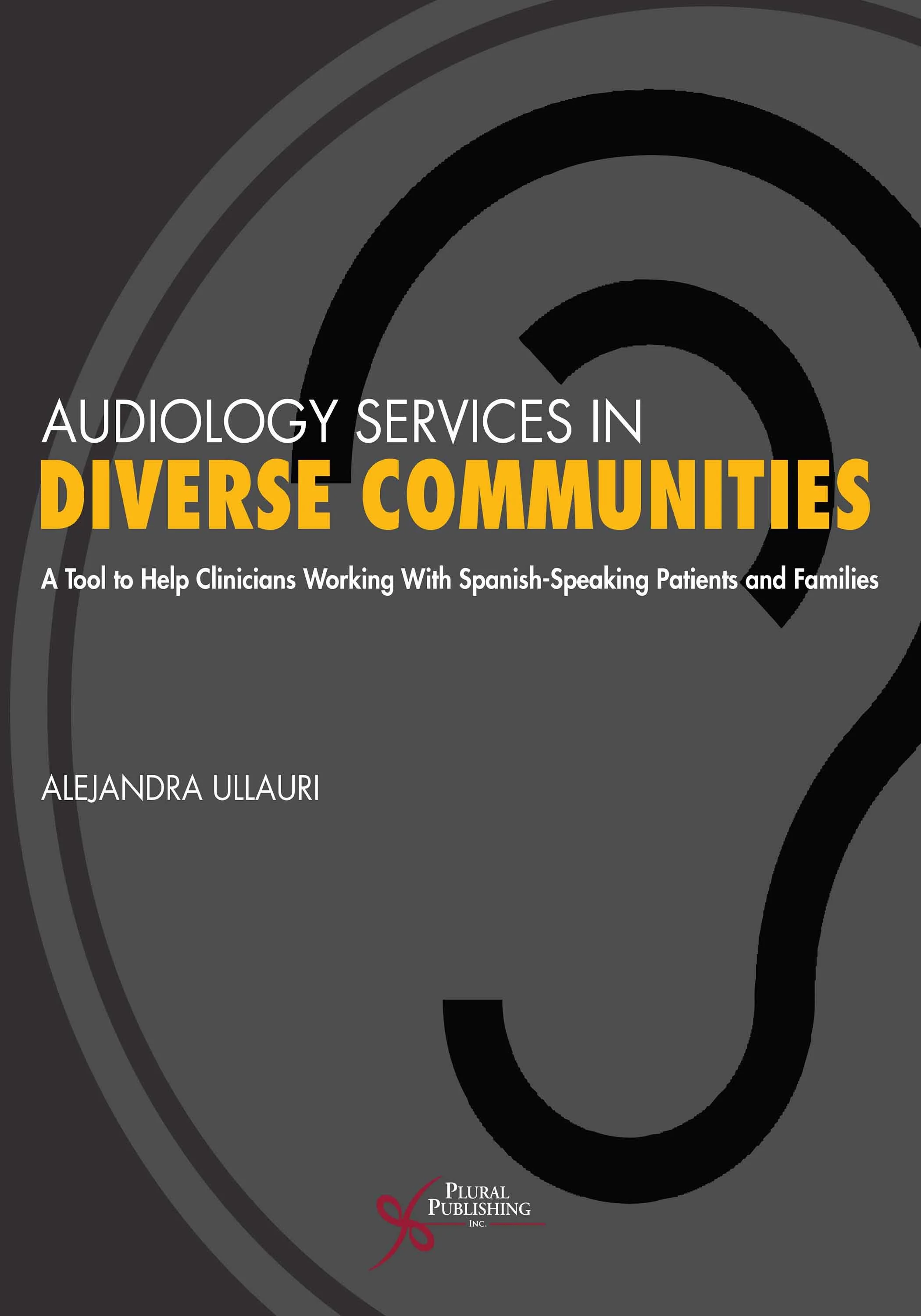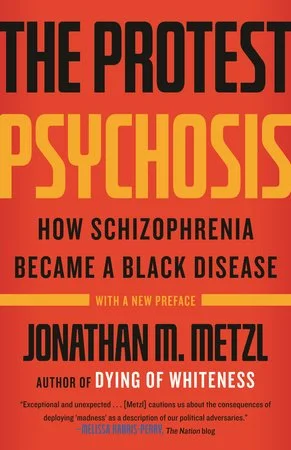
Discover my recommended reading list featuring books on audiology, accessibility, inclusion, and other topics; curated to inspire and educate.
-

Madness Race and Insanity in a Jim Crow Asylum by Antonia Hylton
“In Madness, Antonia Hylton tells the 93-year-old history of Crownsville Hospital, one of the last segregated asylums with surviving records and a campus that still stands to this day in Anne Arundel County, Maryland. She blends the intimate tales of patients and employees whose lives were shaped byrownsville with a decade-worth of investigative research and archival documents. Madness chronicles the stories of Black families whose mental health suffered as they tried, and sometimes failed, to find safety and dignity. Hylton also grapples with her own family's experiences with mental illness, and the secrecy and shame that it reproduced for generations.”
-

Audiology Services in Diverse Communities: A Tool to Help Clinicians Working With Spanish-Speaking Patients and Families by Alejandra Ullauri
“As the population in the U.S. becomes more diverse, health care professionals have a responsibility to adapt their services to meet the needs of the diverse populations they serve. However, many providers lack access to the appropriate resources to provide high quality care to their Spanish-speaking patients. Audiology Services in Diverse Communities is a professional resource designed to decrease language barriers, improve patient-clinician interactions, and create more culturally competent hearing services.
Written by a clinician for clinicians working on a daily basis with minority communities experiencing existing systemic barriers, this unique text begins with an overview of cultural competence and the barriers that exist in audiology services. The text continues an evidence-based, cross-cultural approach to addressing some of those barriers and generating a discussion of what professionals can do in their own clinical settings. The final, and largest, section of the text is a language tool presented in both English and Spanish to aid clinicians as they communicate and work with Spanish-speaking patients.”
-

SCUM Manifesto by Valerie Solanas
“First circulated on the streets of Greenwich Village in 1967, the SCUM Manifesto is a searing indictment of patriarchal culture in all its forms. Shifting fluidly between the worlds of satire and straightforward critique, this classic is a call to action—a radical feminist vision for a different world. This is an update of the essential AK Press edition, with a new foreword.
“To see the SCUM Manifesto’s humor, to let it crack you up page after page, is not to read it as a joke. It’s not. The truth of the world as seen though Valerie’s eyes is patently absurd, a cosmic joke. Humor such as this is a muscle, a weapon… It was the truth, and the truth is so absurd it’s painful.” —Michelle Tea
Valerie Solanas was a radical feminist playwright and social propagandist who was arrested in 1968 after her attempted assassination of Andy Warhol. Deemed a paranoid schizophrenic by the state, Solanas was immortalized in the 1996 film I Shot Andy Warhol.”
-

White Fragility: Why It's So Hard for White People to Talk About Racism by Robin DiAngelo
“In this “vital, necessary, and beautiful book” (Michael Eric Dyson), antiracist educator Robin DiAngelo deftly illuminates the phenomenon of white fragility and “allows us to understand racism as a practice not restricted to ‘bad people’ (Claudia Rankine). Referring to the defensive moves that white people make when challenged racially, white fragility is characterized by emotions such as anger, fear, and guilt, and by behaviors including argumentation and silence. These behaviors, in turn, function to reinstate white racial equilibrium and prevent any meaningful cross-racial dialogue. In this in-depth exploration, DiAngelo examines how white fragility develops, how it protects racial inequality, and what we can do to engage more constructively.”
-

When God Was a Woman by Merlin Stone
“Here, archaeologically documented,is the story of the religion of the Goddess. Under her, women’s roles were far more prominent than in patriarchal Judeo-Christian cultures. Stone describes this ancient system and, with its disintegration, the decline in women’s status.
Merlin Stone was an American author, artist, and art professor. Her book, When God Was a Woman, had a significant effect on the emerging goddess culture of 1970s America.”
Note: When God Was a Woman by Merlin Stone, published in 1976, reflects the perspectives and research of its time. While it explores the historical worship of female deities, the book primarily centers on the experiences and perspectives of cisgender, white women. It may not fully encompass the diversity of voices or contemporary understandings of gender, race, and culture, but it remains a thought-provoking read.
-

The Protest Psychosis: How Schizophrenia Became a Black Disease by Jonathan Metzl
“The civil rights era is largely remembered as a time of sit-ins, boycotts, and riots. But a very different civil rights history evolved at the Ionia State Hospital for the Criminally Insane in Ionia, Michigan. In The Protest Psychosis, psychiatrist and cultural critic Jonathan Metzl tells the shocking story of how schizophrenia became the diagnostic term overwhelmingly applied to African American protesters at Ionia—for political reasons as well as clinical ones. Expertly sifting through a vast array of cultural documents, Metzl shows how associations between schizophrenia and blackness emerged during the tumultuous decades of the 1960s and 1970s—and he provides a cautionary tale of how anxieties about race continue to impact doctor-patient interactions in our seemingly postracial America.”
-

Divergent Mind: Thriving in a World That Wasn't Designed for You by Jenara Nerenberg
“A paradigm-shifting study of neurodivergent women—those with ADHD, autism, synesthesia, high sensitivity, and sensory processing disorder—exploring why these traits are overlooked in women and how society benefits from allowing their unique strengths to flourish.”
Note: This book primarily focuses on the experiences of cisgender, straight, white women, and as such, it may not feel inclusive or fully representative of diverse perspectives. However, it offers valuable insights and is still an engaging read.
-

The Body Keeps the Score by Bessel Van Der Kolk, MD
“‘Essential reading for anyone interested in understanding and treating traumatic stress and the scope of its impact on society.’ (Alexander McFarlane, director of the Centre for Traumatic Stress Studies)
A pioneering researcher transforms our understanding of trauma and offers a bold new paradigm for healing in this New York Times best seller.
Trauma is a fact of life. Veterans and their families deal with the painful aftermath of combat; one in five Americans has been molested; one in four grew up with alcoholics; one in three couples have engaged in physical violence. Dr. Bessel van der Kolk, one of the world’s foremost experts on trauma, has spent more than three decades working with survivors. In The Body Keeps the Score, he uses recent scientific advances to show how trauma literally reshapes both body and brain, compromising sufferers’ capacities for pleasure, engagement, self-control, and trust. He explores innovative treatments - from neurofeedback and meditation to sports, drama, and yoga - that offer new paths to recovery by activating the brain’s natural neuroplasticity. Based on Dr. van der Kolk’s own research and that of other leading specialists, The Body Keeps the Score exposes the tremendous power of our relationships both to hurt and to heal - and offers new hope for reclaiming lives.”